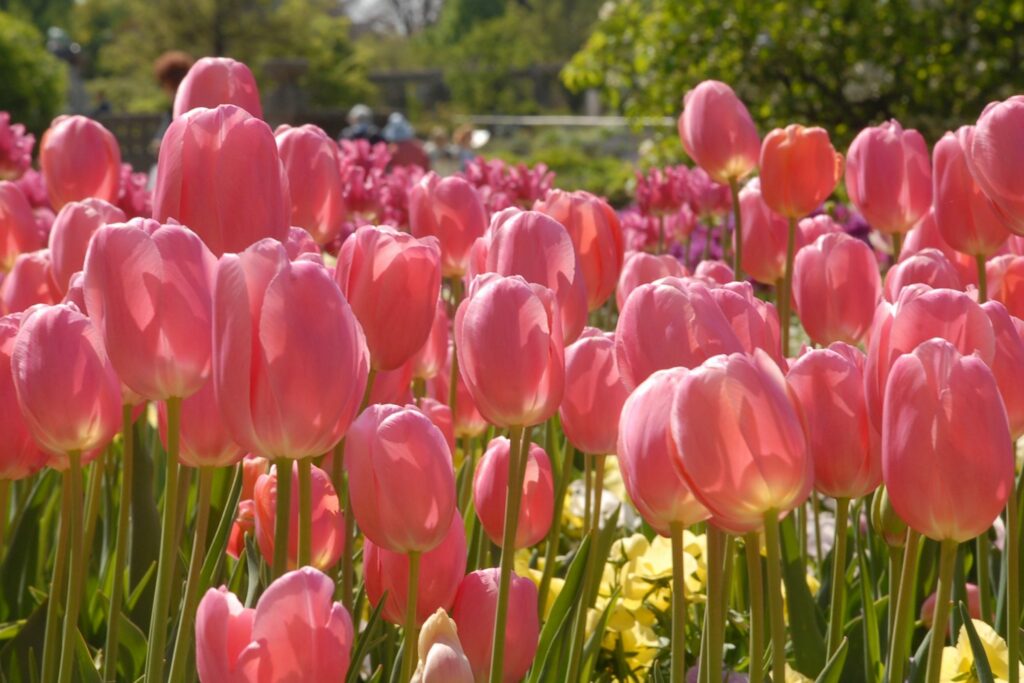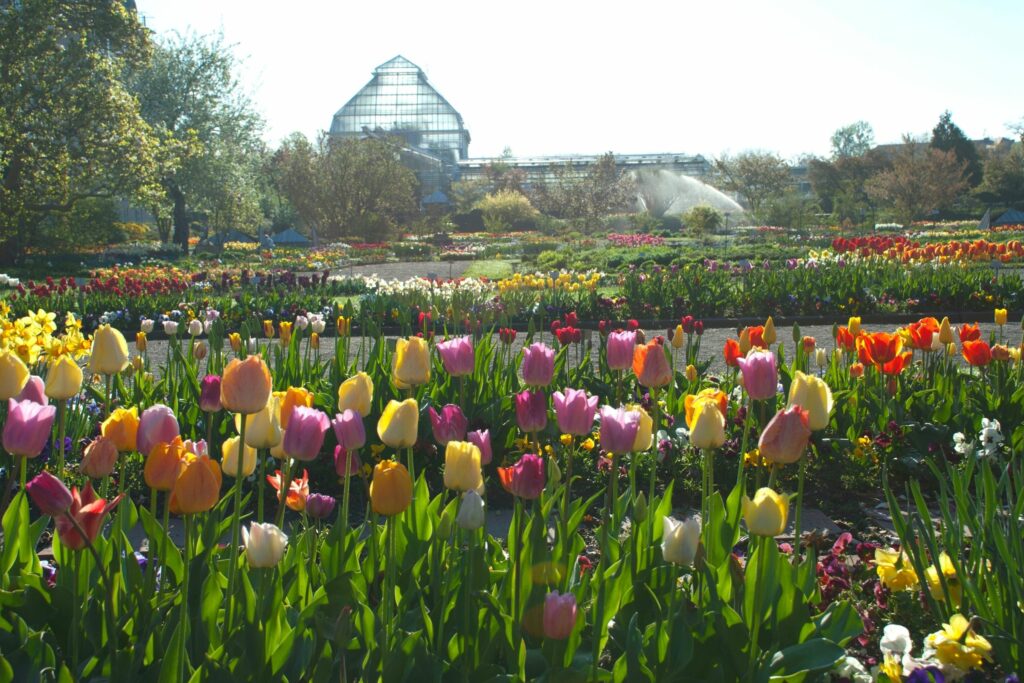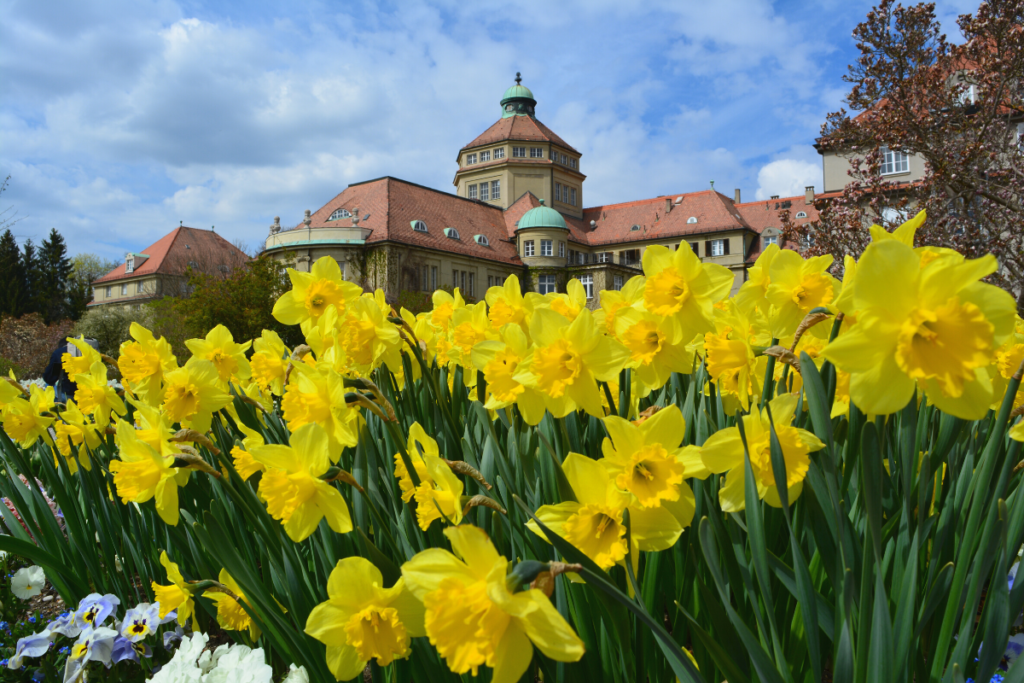Ornamental Yard
Directly opposite the entrance to the greenhouses is the ornamental courtyard framed by dry stone walls. Since the garden was founded, this area has been dedicated to ornamental plants.
It is the central place where every year – once in spring and later from summer to autumn – the abundance of ornamental plants is presented. Every year new patterns decorate the regular beds. Hardly any other outdoor area is characterized by such an abundance of colors and shapes. Visitors can discover old familiar plants in combination with new varieties.
Twice a year, the ornamental courtyard is completely redesigned. In autumn, the bulbs are planted, and in spring they turn it into a sea of tulips, daffodils and hyacinths. Once the bulb plants have faded, they are replaced with plantings for the summer. The dahlia bloom in late summer is the brilliant finale of the outdoor season.
In and around the ornamental courtyard, however, you will also find woody plants such as magnolias, ornamental apples and the handkerchief tree. Of particular note are the semi-shrub peonies along the northern dry stone wall. A water lily pool forms the center of the symmetry of the jewelry courtyard.
Iris Garden
Just above the ornamental beds, the iris garden is a highlight in the month of May. Behind the Alpine House in the eastern part of the garden is another iris bed, which is accessible when the irises are in bloom.
The selective breeding of bartiris varieties began as early as the 19th century, and their initial forms can be seen in the center of the iris garden. The most important further developments in the 20th century can be traced chronologically in the adjacent beds. The overriding goal for the breeders was larger, yet rain-resistant flowers that are evenly distributed along the inflorescence. In terms of vigor and flowering, however, the old varieties are often superior to the new breeds.



Headerimage: Ben Sagmeister

